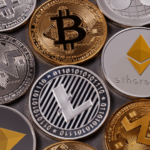
In November 2021, the total transaction volume of the NFT market surpassed US$16 billion. It was just US$355 million in 2020, demonstrating how far NFTs have come in establishing a new asset class in the crypto sector. The market was dominated by sports highlights and trading cards at the start of 2021. However, in the second part of the year, NFTs took on new shapes, resulting in the emergence of new business categories such as virtual real estate, gaming avatars, and fashion.
Investors began to perceive long-term potential in NFT and metaverse-based ventures as the technology grew and evolved. As a result, several non-traditional gaming firms with the goal of creating virtual worlds have raised tens of millions of dollars. True Global Ventures, for example, invested $10 million in The Sandbox, a metaverse leader that will open Alpha access at the end of November 2021.
The idea is to transcend beyond digital art and status symbols using NFTs. Because the underlying technology of NFTs, blockchain, provides better transparency and confidence in ownership, it may be utilised to develop new business models or improve old ones.
Despite the fact that NFTs are still in their infancy, we may be seeing the birth of new use-cases that will revolutionise the world. Some people have already begun to see the difference:
NFT Art in Generative Forms Is Getting More Innovative

Artists may use Generative NFT Art to create a variety of variations while ensuring that each one is unique and has a varied rarity of qualities. The 10,000 distinct CryptoPunks, which are utilised as a status symbol and have found their way to top tier auction houses like Christie’s, are probably the most well-known initiative so far.
As additional projects are launched on a daily basis, many of them have begun to “innovate.” For example, a Bored Ape Yacht Club NFT holder would get digital vials of mutant serum, which they might mix with their Bored Ape to produce a Mutant Ape. This involves the community of NFT holders and encourages them to maintain their NFTs in order to be a part of this select group.
Then there are initiatives like Mauer, which combine historical and emotional components of vital human history with art and deploy them as one-of-a-kind NFTs. It contains astonishing stories about a divided world that are as important today as they were when it was first published, with the bulk of the earnings going to charity that promote freedom and democracy across borders.
NFTs are transforming the metaverses.

The metaverse might be the largest gamble of the decade, and NFTs considerably boost their chances. Users become creators when NFTs are used in a metaverse, allowing them to sell their material and have full digital ownership. Whatever it is, as long as it brings value to the metaverse, it is OK. They may also utilise NFTs as a verifiable identification card, or with the necessary reputation, to get entry to private events, organisations, and virtual environments.
Users, for example, determine the development of a virtual area like The Sandbox’s ecology since they are the ones that create and develop game materials. VoxEdit, a robust 3D modelling tool, is also available in this metaverse for quickly creating assets and converting them to NFTs.
With over 500,000 registered wallets and 12,000 special virtual LAND owners, the Sandbox is presently the most popular NFT Metaverse in terms of unique addresses. They produced more than US$144 million in lifetime Gross Merchandise Value (GMV) sales in November 2021, and that figure is expected to rise even higher in 2022.
NFTs are helping to make music more equitable.

Inequitable income distribution has long been a concern in the music industry. Furthermore, most existing streaming arrangements have a lack of transparency and poor royalty rates. Tokenizing music tracks as NFTs now solves this problem. Music NFTs help artists greatly since they let them to distribute albums on-chain with better royalties and avoid sharing a large income split with third parties.
Aside from the financial benefits, artists may engage their audience and create a passionate community. Building a community will enable artists to engage directly with fans, as well as begin financing and crowdsourcing ideas for future albums. Artists may also use their NFTs to collect cash and give their followers the opportunity to share in a piece of the artist’s earnings.
It’s Only a Matter of Time Before Everyone Uses NFTs
It’s just a matter of time until we see full-on widespread NFT adoption, with so many use-cases entering the real world and providing considerable value to people’s lives. The creator economy will fundamentally transform as each creative reclaims control and may monetize in a variety of ways with the support of a community. Metaverses and Play-to-Make games will completely incorporate NFTs into their economic models, resulting in a new generation of gamers who will not only enjoy their time in Metaverses and Games, but will also be able to earn money doing so.




